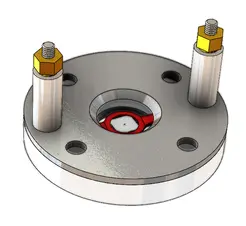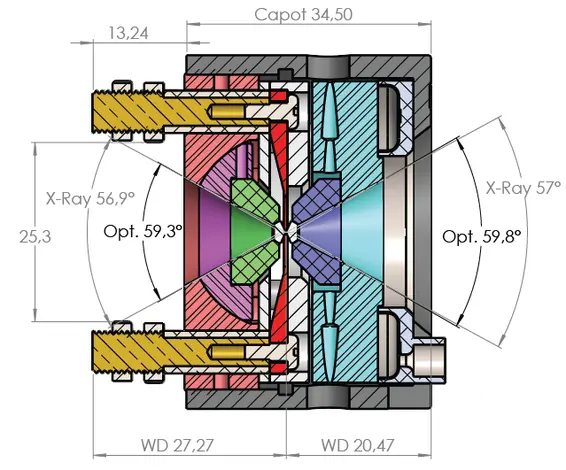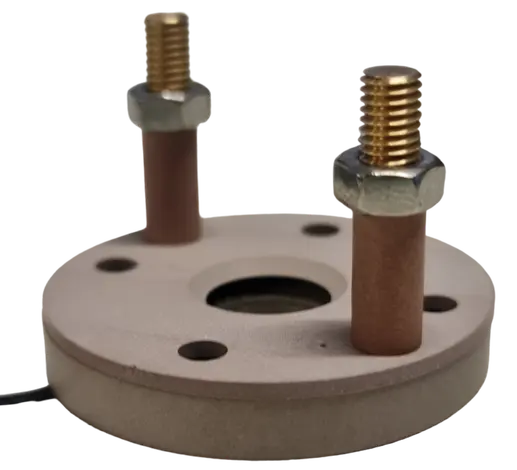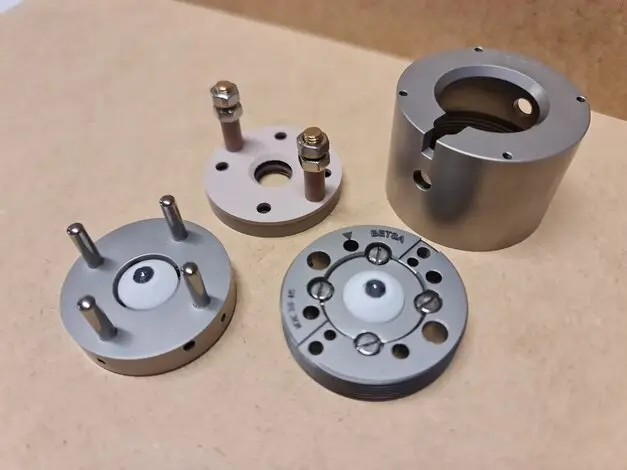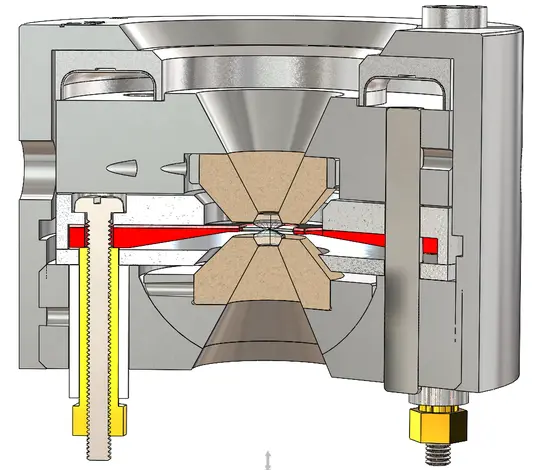Internal Heating System [IHS]
For M-DAC-XCV-THT-IHS
Membrane
Diamond Anvil Cell
XCV Model
Very High Temperature
Internal Heating System
The IHS is an internal stage of the M-DAC BETSA® it can be used in addition to the EHS, which is used to work around the M-DAC
The IHS emits a temperature up to 1450°C
BETSA® has developed an internal heating system that can reach temperatures of up to 1450°C continuously and in the air, gas or vaccum.
Our 3D printed IHS can be customized to fit your specific needs and environment in terms of anvil size, shape and seal material.
BETSA® also offers a variety of possibilities, the 3D printed IHS can be studied for you according to your request, you know that BETSA® also works on special requests
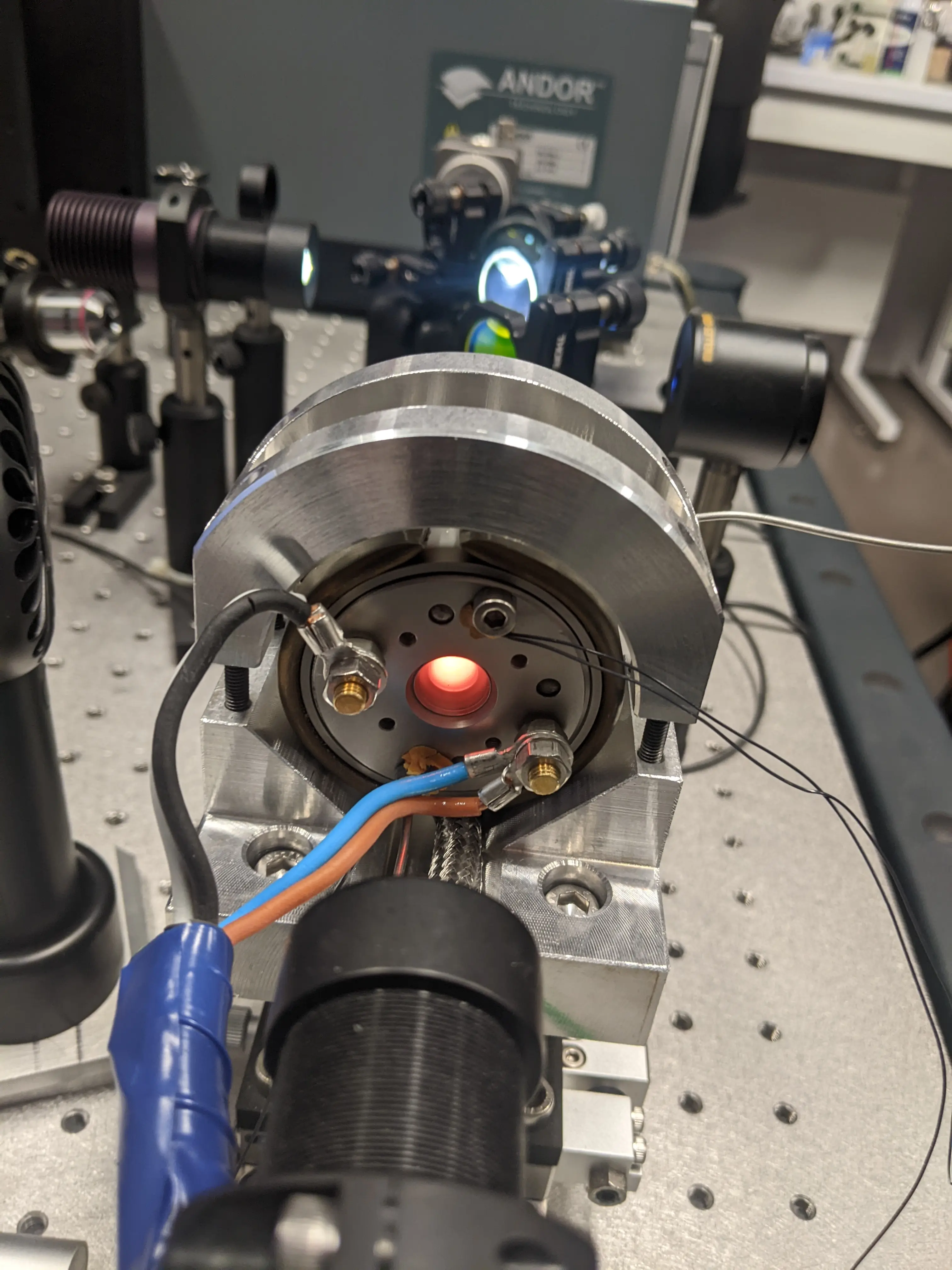
Features :• Maximum temperature: 1450°C• Power full for circular IHS - 1mm² - 1.5V DC / 19A• Connections: by external double 13 AWG wire (2x2.5mm²)• Regulation precision: ± 5/10 ° C (depends on the conditions air/gas/vacuum)Comes with two thermocouples sondes with connectors• 1 thermocouple inputs type K soldering direct to the 3D printed resistor to control the Highest temperature• 1 must be glued on the anvil to control the in-situ temp• useful Power supply: 110-230 Vac 50 Hz - DC 15V/60ASize features:• pyrophyllite isolator corps matter• Outside diameter: 42.6mm• Inside diameter: 13mm• Entraxe output : 34mm - Ø6mmBETSA® can develop and study special sizesaccording to your needs, on request
